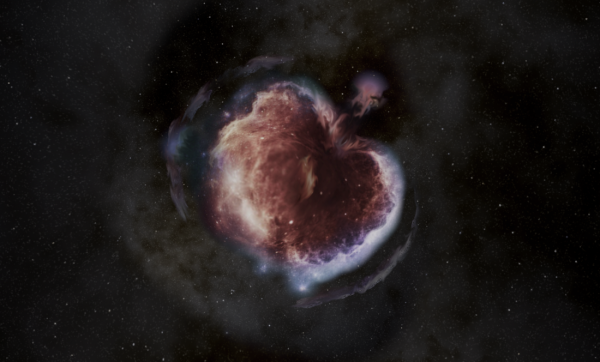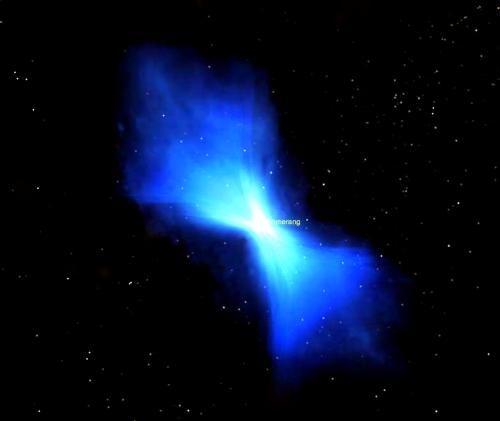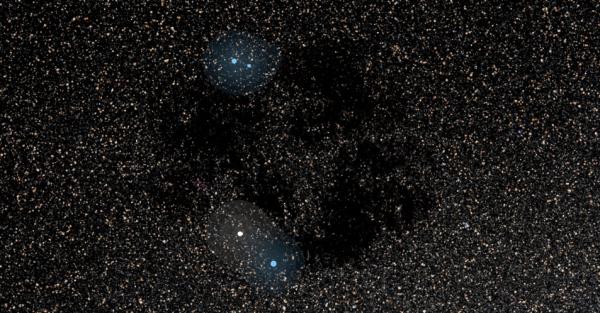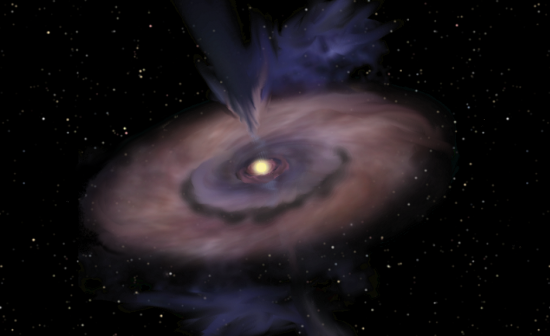BY LETTER
Nebula
  Images from Steve Bowers | |
| From top; The Apple Nebula (a protoplanetary nebula), the Boomerang Nebula (a hypercold protoplanetary nebula) and Hubble's Variable Nebula (a reflection nebula) | |
There is a common saying: "a nebula only looks good from a distance". And I'd usually it is true. When you look at one through a telescope or when doing a spacewalk on a nightside they are gorgeous. But when you get closer, they fade and become transparent, and when you are in the middle of one it just looks like the stars are a bit more reddish than usual. Even the blackbody nebula out in the Perseus Arm loses its drama when you get close to it. I should know- I flew straight through it.A huge, diffuse cloud of gas and dust in interstellar space. The gas is mostly hydrogen (H2).
But there is one region of space where the saying isn't true, and that is the Orion federation. Those nebulas still look magnificent close up- draperies of red and blue, streaks as dark as the galactic nadir. And bright young stars everywhere, lighting up the gas and blowing it into piles, streamers, or bubbles. The sky at Enremdea- on one side the Orion Nebula, on the other the Cone Nebula and the Christmas Tree- is one of the most magnificent sights anywhere.
From "The Passenger"
Bright nebulae glow with light emitted by the gas of which they are composed (emission nebulae) or by reflected starlight (reflection nebulae) or both.
 Image from Steve Bowers | |
| The Southern Coalsack (a dark nebula); location of the Solipsist Panvirtuality complex known as the Googlehertz Virchdrome | |
Protoplanetary Disks are condensations of gas and dust in the process of forming a star and solar system; these should not be confused with the term Protoplanetary Nebulae, which are an intermediate phase between the giant phase of a star's evolution and the Planetary nebula phase. Planetary nebulae are shells of gas ejected by dying giant stars.
 Image from Steve Bowers | |
| A protoplanetary disk, a rapidly rotating nebula that will eventually coalesce into planets | |
Related Articles
- Boomerang Nebula
- Cloudharvesters
- Coal Sack Nebula
- Cygnus Loop
- Dark Nebulae
- Dumbbell Nebula
- Eagle Nebula
- Emission Nebula
- Golifa Nebula
- Gum Nebula
- Horsehead Nebula
- Hubble's Variable Nebula
- Lagoon Nebula
- Laughter Nebula - Text by Anders Sandberg
One of the five nebulae in the volume close to the War and Peace Nebula named after the Rational Virtues (Laughter, Curiosity, Zeal, Reflection and Compassion) in Konensis Mysticism. - Orion Nebula
- Protoplanetary and Planetary Nebula
- Rosette Nebula
- Star
- Trifid Nebula
- Verifex Nebula
Appears in Topics
Development Notes
Text by M. Alan Kazlev
Extra material by Steve Bowers (april 2025)
Initially published on 09 December 2001.
Extra material by Steve Bowers (april 2025)
Initially published on 09 December 2001.
Additional Information
a Nebula is featured in The Passenger by Anders Sandberg, available in After tranquility, tales from Orion's arm II






